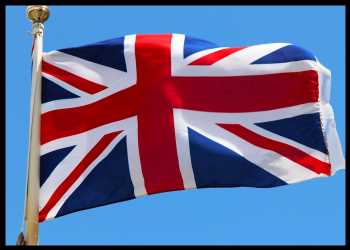UK GDP Growth Confirmed At 0.1%

The UK economy expanded modestly in the first quarter, as initially estimated, underpinned by services and production, revised data from the Office for National Statistics showed on Friday.
Gross domestic product registered a sequential growth of 0.1 percent in the first quarter. The preliminary estimate was thus left unchanged and also matched the fourth quarter’s expansion.
Still, the level of quarterly GDP was 0.5 percent below its pre-pandemic level.
Data confirmed that the UK economy steered clear of a recession at the start of the year, Capital Economics economist Ashley Webb said.
However, with around 60 percent of the drag from higher interest rates yet to be felt, the economy is likely to tip into one in the second half of this year involving a peak-to-trough fall in real GDP of around 0.5 percent, the economist added.
In output terms, the services sector expanded 0.1 percent, unrevised from the previous estimate. The increase was driven by information and communications and, administrative and support service activities.
Industrial production also grew 0.1 percent, which was same as the first estimate. This followed nil growth in the fourth quarter.
Within production, manufacturing gained 0.6 percent, which was revised up from 0.5 percent. By contrast, mining and quarrying output declined 5.4 percent.
Meanwhile, growth in construction sector was revised down to 0.4 percent from 0.7 percent. The improvement was underpinned by repair and maintenance.
The expenditure-side of GDP showed that there was no change in household spending in the first quarter. This followed a 0.2 percent growth in the preceding quarter, as real household incomes continued to be squeezed by high inflation.
The increase in gross fixed capital formation was revised to 2.4 percent from 1.3 percent. The revision reflects an upward revision in business investment, which climbed 3.3 percent.
The improvement in gross fixed capital formation was partially offset by a 1.8 percent decline in government consumption. The drop was revised from the initially estimated 2.5 percent fall.
There was a decrease in the volume of net trade in the first quarter. Data showed that trade deficit for goods and services was 2.0 percent of nominal GDP, revised down from the first estimate deficit of 1.4 percent.
Another report from the ONS showed that the underlying current account deficit, excluding previous metals, narrowed to GBP 17.0 billion from GBP 21.1 billion a quarter ago.
Source: Read Full Article
